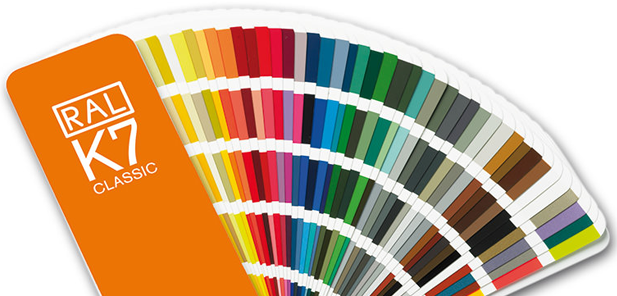Color Mixing, Catalogues and Colors Systems

Example of a color mixing machine (tintometric system)
In the paint industry, colour mixing is often done in the same way, through the use of colour mixing machines and a tintometric system, assisted by computer software, to which each brand gives a specific name, although the results remain identical. In addition to this kind of colour mixing that is usually done in any good paint shop, typically for small quantities of paint, there are also industrial colour mixing machines that can mix a large quantity of buckets of paint of the same colour, which is ideal for placing orders bigger than 10 buckets for colour mixing machines, because in addition to being much faster, the final result, (colour), will certainly be much more accurate and uniform in all buckets.
This is due to the calibration and technology of this type of machines and also to the type of pigments used.
CATALOGUES / COLOR SYSTEMS
In the decorative paint market, several international colour catalogues are utilised, such as NCS and RAL, as well as the paint brands' own catalogues.

• RAL SYSTEM
The acronym RAL stands for: "Rationelle Arbeitsgrundlagen für die praktiker des Lack."
In this system, the colours are identified by 4 digits. Ex.: RAL 3009, which corresponds to the red oxide colour (Oxidrot).
In the 1920s, standardisation was the main subject in the paint and varnish industry. For this reason, consumers and authorities agreed to establish a 40-colour scale, assembled from primary and mixed colours.
This scale was delivered to the attention of the RAL Institute, which registered it under the number RAL 840, in 1927. In the meantime, these 40 RAL colours have multiplied to 1898 colours, of which 30 are still original colours of the 1927’s scale!
The RAL system represents standard colours in many materials, equipment and brands on the market.
There are several RAL colour catalogues, but the most commonly catalogue used internationally is the RAL Classic which features a glossy finish.
The RAL system is divided into 9 groups of colours with their respective shades. The initial number indicates the group of shades to which they belong.
RAL SHADES
| 1xxx | 2xxx | 3xxx | 4xxx | 5xxx | 6xxx | 7xxx | 8xxx | 9xxx |
| Yellow | Orange | Red | Violets and Purple |
Blue | Green | Gray | Brown | Black and Whites |

• NCS SYSTEM
The acronym NCS stands for: Natural Color System.
The NCS colour catalogue features 1950 colours, which allows the customer to choose a certain colour in a wide variety of shades. The NCS notation system is easy to use and can be used by any brand of paint. NCS facilitates communication between design and manufacturing industries.
When you use the NCS catalogue, it is easy to search for references in different products such as: paints, fabrics, leather, wallpaper, ceramics, etc.
At the base of the Natural Colour System (NCS) there are 6 elementary colours. They are: White (W), Black (S), Yellow (Y), Red (R), Blue (B) and Green (G).


The meaning of this notation is:
- The 4 digits refer to the percentage of darkness and saturation, while the alphanumeric code is based on the pairs that make up the 6 elementary colours: White, Black, Yellow, Red, Blue, Green.
This alphanumeric code is related to the similarity of these 6 elementary colours.
Let's take a look at some examples;
— In the colour NCS S 1050-Y90R, darkness is 10% (s) and chromaticity (c) 50%, Y90R indicates the percentage of similarity in colour of the two primary colours, in this case, yellow 10% (Y) and red 90% (R).


— In the colour NCS S 4055-R95B (= 40% darkness, 55% chromaticity, 5% Red + 95% Blue.)
The grey colours are saturation-free and receive only notations followed by the letter N, meaning neutral.
Examples:
— White – NCS 0500-N
— Black – NCS 9000-N


• PANTONE SYSTEM
PANTONE® is known worldwide as the standard language for colour communication in the following activities; Design, Graphic Design, Textile, Fashion, Internet, Plastics, Rubber, Hot-Stamping, Flexography, Publication Gravure, Stamping, Dyeing, Screen Printing, Signage, Electronic Publishing, Multimedia, Coatings, Decoration, Interior Design, Acrylics and a lot more.
Although this colour catalogue is not used in the paint industry, it is still possible to find some brands that manufacture some of these colours.
